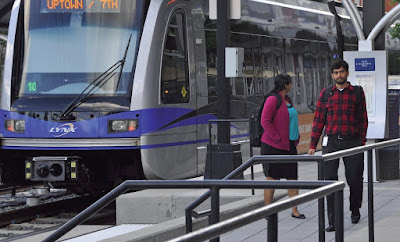ON LET’S
TALK MIAMI PODCAST WITH CAMILA CEBALLOS
 |
| Rules should force absentee owners to restore abandoned houses to original code-compliant condition. Those who do illegal demolition should be ordered to rent restored units as affordable for 5 years. |
I am gratified
to have talked about activism in the historic Shenandoah neighborhood of Little
Havana for more than a half hour with podcaster Camila Ceballos.
I was proud
to be her end of the year, final program.
We chatted
about the city needing to do a better job of cleaning up, securing and redeveloping
abandoned houses and vacant lots.
We
differentiated between owner-occupied homes, with elderly or poor residents who
do not have the ability or money to keep their roofs, windows and lots in
perfect shape – vs. absentee owner speculators who often do illegal demolition
then walk away from their unsafe structures.
We talked
about the need for swifter action to push the hands of investors who trash core
neighborhoods, encouraging blight, squatters while discourage healthy
investment from young families and others who would otherwise move into the
neighborhood and become rooted in it.
View the
podcast here:
https://www.youtube.com/watch?v=UHOOoetlIh8&feature=youtu.be
I feel that
these lots could be built with properly-scaled affordable housing. Abandoned
houses could be rehabbed to become attainable rental properties for workforce housing.
As a longtime
advocate for people with disabilities, I noted that less than one percent of
housing in Miami is move-in ready for a person who uses a wheelchair for
mobility. So, a good chunk of the infill housing on these blighted lots should be
build accessible.
We also
discussed research that has shown upwards of half of the people of Miami pay
more than half their total income toward housing – a totally unsustainable housing
gap, because the average family should pay no more than one third of its income
on housing.
 |
| Camila Ceballos, host of Let's Talk Miami Podcast |
We also
touched on my Twitter storm and TV interviews underscoring the blight caused by
illegal dumping in Miami’s older, core neighborhoods.
We agreed
that whether you are a Republican, Democrat, Independent or other – maintaining
quality of life in a decent, diverse, mixed-income neighborhood is important to
you.
There is no
political bias – red or blue – when you work to punish both speculators who
destroy dozens of viable lots in a neighborhood and fly by night contractors
who illegally dump trash on side alleys and on vacant lots.
I support my
elected officials – being a public servant for the City of Miami was one of the
most satisfying jobs of my long career – but I expect them to never hide behind
excuses of process…while always leaping in to cut red tape to help the little guy.
Happy Holidays.
If you want
to play Santa for working class Miami, then share this blog item and the link
to the podcast with your elected officials, neighbors and friends.
Alternate link to podcast:
https://anchor.fm/miamitalkspolitics/episodes/Abandoned-Lots-in-the-Heart-of-Miami-enrrpg
 |
| Your tireless advocate for urban living with HoneyBear the Siamese rescue cat |

















































